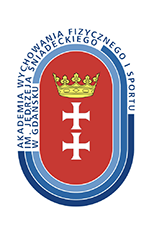Abstract
Introduction: The main aim of this research was to determine whether there are statistically significant correlations between TMG variables and jumping performance. Materials and Methods: Twenty-five healthy and physically active male students (age: 20.84 ± 0.99 years; body height: 179.46 ± 5.91 cm; body weight: 73.88 ± 6.43 kg) of the Faculty of Sport and Physical Education participated in this study. Radial displacement, contraction time and delay time of the m. vastus lateralis were collected to assess muscles’ contractile characteristics using tensiomyography (TMG). Additionally, squat jump and countermovement jump height were recorded using the Optojump system. Results: A very high, negative, statistically significant correlation between both power assessment variables and the radial displacement variable was found; more specifically, the correlation between CMJ and radial displacement amounted to r = -.80, p < .01, while for SJ and radial displacement the correlation amounted to r = -.73, p < .01. High, negative, statistically significant correlations (r = -.61 to -.69, p < .01) were achieved among all other variables. Conclusion: TMG parameters could successfully predict jumping performance in the studied sample of male students.
Recommended Citation
Tabakovic A, Abazovic E, Tabakovic M, Kovacevic E. Correlations between tensiomyography variables and lower extremity power. Balt J Health Phys Act. 2024;16(4):Article9. DOI: 10.29359/BJHPA.16.4.09
Author ORCID Identifier
Adis Tabaković: 0000-0001-9771-6854
Ensar Abazović: 0000-0001-8814-5826
Muhamed Tabaković: 0000-0001-8241-6947
Erol Kovačević: 0000-0003-4391-6070
Creative Commons License

This work is licensed under a Creative Commons Attribution-Noncommercial-No Derivative Works 4.0 License.
Included in
Health and Physical Education Commons, Sports Medicine Commons, Sports Sciences Commons, Sports Studies Commons



